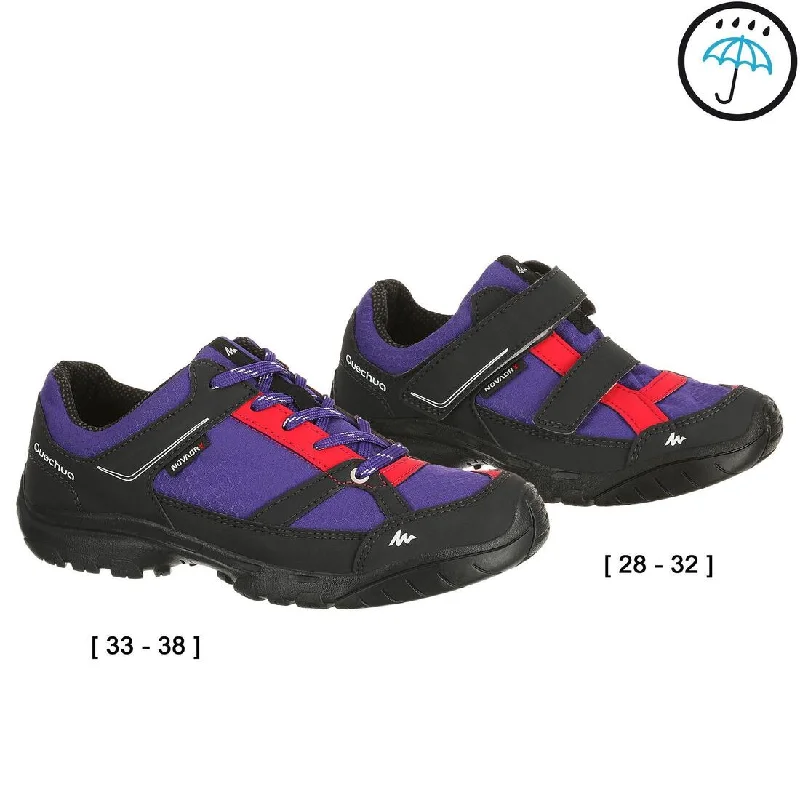Our hikers have developed these waterproof boots for half-day hiking, in all weather conditions and on relatively even trails
Footwear waterproofing test.
Footwear waterproofing test: the boots, which have been in the laboratory and the field, are equipped with a breathable and waterproof membrane to provide optimum protection from the rain. To start, they are immersed in water with pressurised air inside to check that no air bubbles appear on the surface of the boot. Then they are placed on a mechanical arm that simulates walking and half immersed in water to check that the inside of the shoe remains perfectly dry.
3 levels of waterproofing
During the waterproofing test, we test 3 levels of waterproofing, i.e. 2000 flexes (about 2 hours of walking), 4000 flexes (about 4 hours of walking) and 8000 flexes (about 8 hours of walking). The Arpenaz 50 children's boot is waterproof for 2000 flexes.
Making waterproofing last longer
The waterproofing of a boot is often compromised because water gets in at the collar of the boot. To keep your feet dry for longer, it is therefore advisable to use a waterproof gaiter or mini-gaiter that will prevent water as well as pebbles, sand, etc. from getting inside through the top. It is advisable to use a waterproof spray several times a year. This restores the original water repellent properties and prevents staining.
Buying tips
Ask your child to try on both boots, with the socks used for hiking.Try several models in several sizes if needed.Check the following two areas of comfort: the heel and the front of the foot when going downhill.There should be no compression points when fitting.Don't hesitate to walk around the store.Get your child to gradually wear in the boots during their first few hikes so that they conform to their feet.
Which size should you choose?
For hiking, do not hesitate to take one size above your usual size to ensure optimal comfort going downhill and prevent your toes from hitting the front of the boot. Advice: keep your toenails short and, before descending, check that your lacing prevents your foot from sliding forwards inside the boot.
Field tests
All our boots are tested for their wearing comfort and use in the field by the target users under the same conditions as they would experience in real-life use. In particular, our ""Test Missions"" bring together the product manager with people who are not affiliated with Quechua, to test, develop and validate the products.
Laboratory tests
Laboratory tests are also conducted to validate the following: tearing of eyelets and straps, gluing, toxicology, resistance to UV rays, abrasion of the sole and upper components, accelerated ageing.
Entry price robust and lightweight. Ideal boot for hiking in wet ground.
Our hikers have developed these waterproof boots for half-day hiking in all weather conditions and on relatively even trails

